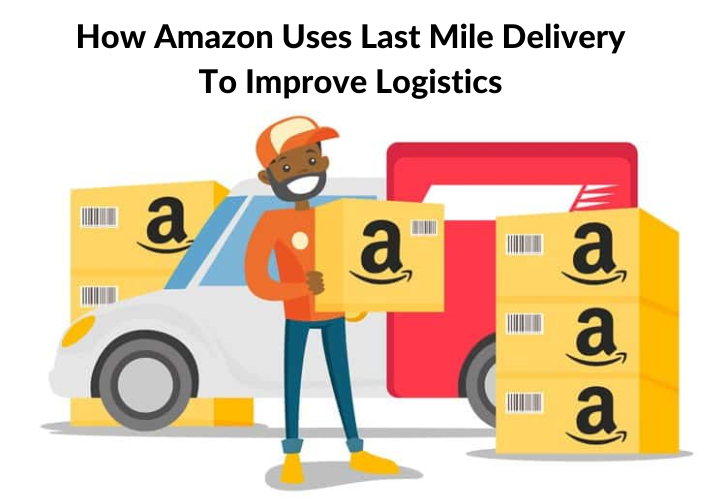Summary
As is common knowledge by now, last-mile logistics is the costliest part of the order-fulfillment process.
Since Ecommerce is a highly competitive business with low margins with almost all products easily available on numerous marketplaces, companies are forever experimenting with new ways to cut costs and gain a march over their competitors.
In such a scenario, order delivery has become a critical tool for creating a competitive advantage. Suppliers, as well as logistics and distribution companies, are constantly engaged in trying to deliver consumer packages faster and cheaper while trying to offer their consumers as many options as possible.
While economies-of-scale impact the business of supply chain and distribution as much as any other industry – with greater volumes bringing cost efficiencies – the challenge rests particularly with last-mile logistics. Delivering each parcel to individual customer addresses is a tough task. Unsurprisingly, last-mile accounts for more than 50% of the overall cost of distribution.
In this article, we look at the journey that Amazon has traversed to reduce the cost of last mile delivery, including its initiatives going into the future.
Ecommerce’s greatest challenge: staying adjacent with increasing delivery demands.
All e-commerce businesses will answer in unison when posed the question about their “greatest challenge” – keeping up with the delivery demands of today’s customers!
Case in point, when even an Ecommerce behemoth like Amazon has encountered years of struggle with its deliveries, you know that the issue is deep and needs serious thought.
Therefore, if you are an eCommerce firm and are looking to study best practices in last mile delivery excellence, here is a comprehensive look at the way Amazon does it.
Amazon’s in-house logistics: a look at its history
1. Same-Day Deliveries (2009): Back in 2009, at a time when today’s express delivery times were unbeknownst to the world, Amazon introduced it under the name of Local Express Delivery!
In its early days, this had limited availability, being restricted only to the metros of the USA. Between 2009-13, its logistics improved incrementally each year. Acquisitions like the 2012 KEVA robotics were also made.
2. Operation Dragon Boat (2013): They took their in-house logistics and last-mile delivery expertise to the world via Operation Dragon Boat. In the same year, the company announced that Amazon Prime Air, a drone fleet geared toward last-mile delivery excellence consisting of 30 drones, was in the works.
But, it has remained mired in air traffic and regulatory guidelines since thus not being able to operate effectively.
3. Upping the ante (2014): Needing to improve its last-mile delivery capabilities to keep up with its expansion, Amazon bought a 25% stake each in Colis Prive and Yodel, two shipping companies. (In 2016, Amazon fully acquired Colis Prive, and further added to their rapidly growing last-mile muscle).
4. Amazon Prime Now (2015): 2015 saw the launch of the now-ubiquitous Amazon Prime Now, a critical part of Operation Dragon Boat. It launched 58 delivery hubs all over the US, aimed at achieving last-mile delivery that was lean and cost-effective and consistently delivering the “1-2 hour delivery.”
5. Amazon Flex: Following the unprecedented success of Amazon Prime Now, the company decided to foray into the on-demand market.
With its infrastructure already in place (unlike competitors Postmates and Uber), Amazon Flex – an on-demand delivery service to deliver goods from Amazon warehouses to customers directly – was launched. Under this, all drivers are included within the sharing economy, a move that is conducive to order-fulfillment.
6. Amazon Logistics (2018): To reduce its shipping and fulfillment costs (which stood at a mammoth $27 bn and $34 bn respectively in 2018), Amazon Logistics was officially launched.
7. Free One-Two-Day Delivery (2019): With its in-house logistics operation now marching toward achieving its true potential, Amazon launched its (now famous!) free one-day delivery! This step turned out to be an important game-changer since the demand for one-two-day delivery shot up by more than 90% within the same year!
8. Amazon Robotics Program (2020): The Amazon Robotics Program was introduced as a collaboration/service for innovators and delivery startups to generate cutting-edge, tech-driven last-mile delivery solutions via collaborations with Amazon.
9. 2021- onwards:
• Prime Air Program: creating a fleet of 200+ aircraft for last-mile delivery services
• Prime Aircrafts: Amazon aims to take its air fleet to a total of 82 by adding 12 new aircraft
• Air-hubs: at the Northern Kentucky/Cincinnati airports purely for enhancing their last-mile logistics
Some key last-mile initiatives by Amazon:
1. DSP (Delivery Service Partner Program): Through this partnership program, Amazon teams up with upcoming logistics startups. The partner invests approximately $10,000 to set up a delivery team, whereas Amazon supplies the demand, i.e., packages that are to be delivered to customer addresses from their company warehouses. Within the US itself, Amazon has already partnered with about 2,000 such 3rd party delivery partners.
2. Amazon Prime Air: Jeff Bezos has been driving the use of drones as a convenient option for delivering packages since as far back as 2013!
Prime Air seeks to do just this, having received the go-ahead from the FAA (Federal Aviation Administration) to test out this technology.
The company claims that using drones is also eco-friendly since they are electric and use clean energy. It aims to make all its deliveries carbon-free and commits to achieving 50% of this by 2030.
3. Amazon Scout: A fully electric robot that is designed for direct delivery of packages to customer doorsteps. This facility is currently available only in Snohomish County, Washington, and has received great support from its community.
Conclusion: As is evident, Amazon has tackled the challenges of last-mile delivery head-on. From reimagining what’s possible by constantly deploying new technologies to maintaining a razor-sharp focus on driving down costs, Amazon is not planning on letting up anytime soon!
Clearly, this e-commerce behemoth is focused on dominating the last-mile delivery eco-system. Therefore, if you are looking for solutions for your business, you would do well to study how Amazon went about analyzing and developing its in-house logistics solutions.
You will also discover that embedded within all such successful logistics systems of today, are advanced tech tools like an automated, modern last mile delivery software.




